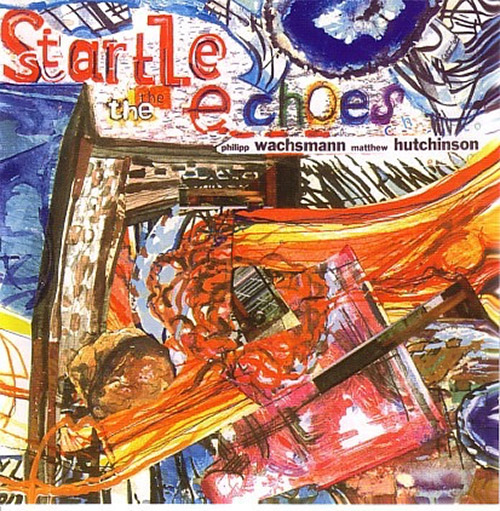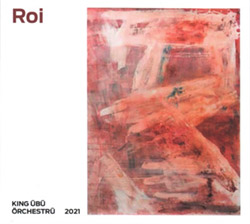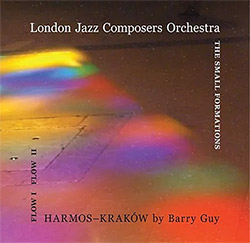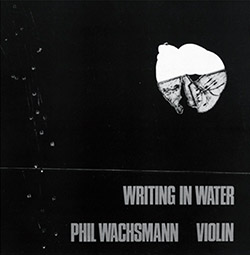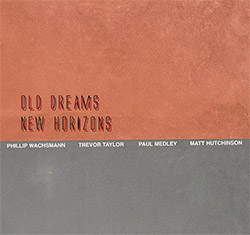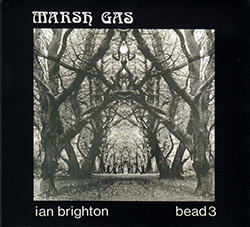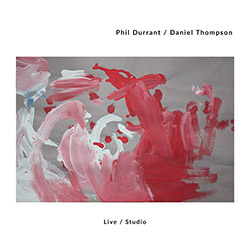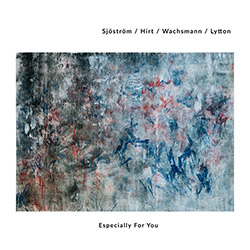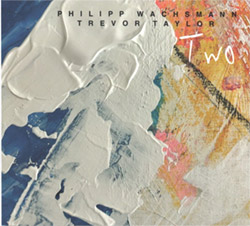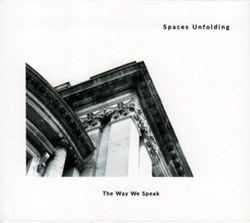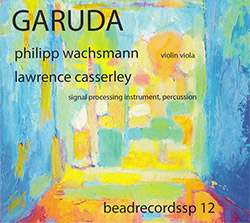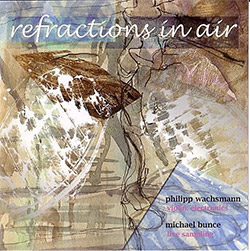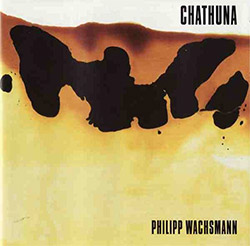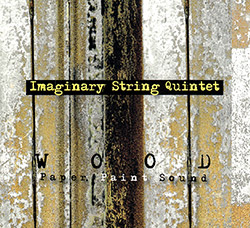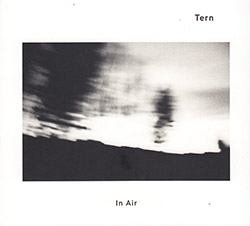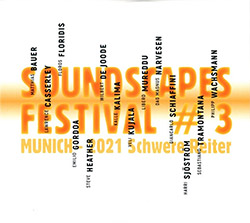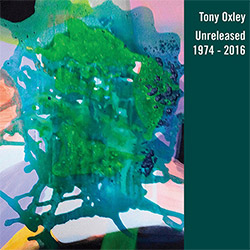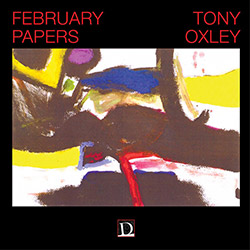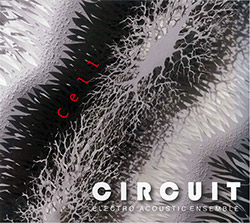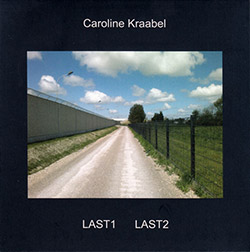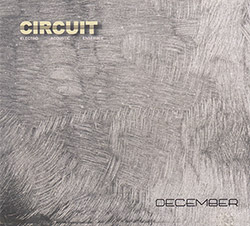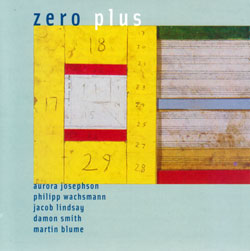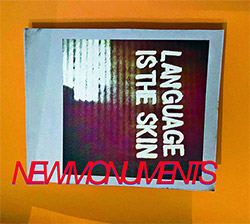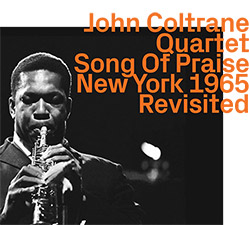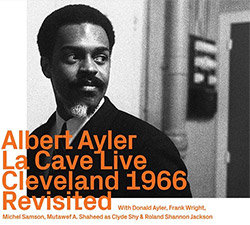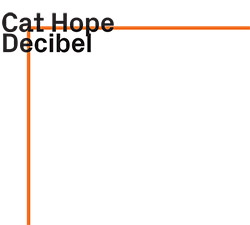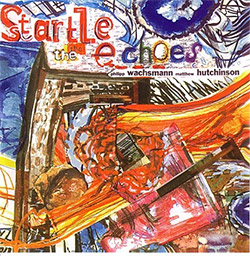
Beginning their collaboration during the 1970s in the Chamberpot Ensemble, the duo of violinist Philipp Wachsmann and keyboard and electronic improviser Matthew Hutchinson are heard in live recording from three London Concerts in 2002 & 2003, Wachsmann's violin extended via live signal processing and transformations, extending their dialogs in expansive ways.
In Stock
Quantity in Basket: None
Log In to use our Wish List
Shipping Weight: 4.00 units
Sample The Album:
Philipp Wachsmann-violin
Matthew Hutchinson-keyboards, electronics
Click an artist name above to see in-stock items for that artist.
UPC: 5024545279825
Label: Bead
Catalog ID: Bead CD05 SP
Squidco Product Code: 32532
Format: CD
Condition: New
Released: 2004
Country: UK
Packaging: Jewel Case
Tracks 1 and 3 recorded at The Red Rose, in London, United Kingdom, on March 17th, 2002; Tracks 4 and 6 recorded at The Charteris Centre, in London, United Kingdom, on December 15th, 2002-12-15; Tracks 2 and 5 recorded at Camden People's Theatre, in London, United Kingdom, on June 29th, 2003.
"The Wachsmann / Hutchinson duo has existed since the 1980's. It grew out of the influential Chamberpot ensemble that started in the early 70's, and which recorded on Bead Records. Since then the duo has been performing in a wide variety of venues and at times in extended groups.
The music in this recording is taken from three London concerts. The six tracks contain music that is wide ranging, provocative, haunting often with juxtapositions of unlikely and seemingly unreconcilable elements that include the tonal, the abstract, the absurd, the funny, and the sublime. Sometimes with stunning disparity the music tells an unusual story.
Both musicians are concerned with live electronics as a spontaneous and fluent extension of their musical intents - be it with different approaches.
Philipp Wachsmann's electronics began with two contact mics on the violin and later introduced self made circuits such as ring modulation. Later he added further analogue and then digital transformation as they became available. His electronics complement, extend and feed his acoustic playing from the use of simple sound reinforcement to the dazzling and complex use of signal processing (and manipulation), with the acoustic violin remaining at the heart of it.
Matthew Hutchinson began primarily as an acoustic pianist but later relied increasingly on electric piano due to the lack of suitable pianos at many venues. His work on electric piano led naturally to the additions of transformations and to extend sound generation (namely synthesisers). He produces sounds in such a way that his electronically generated sources often gain the sensitivity and type of presence more normally associated with acoustic instruments.-Bead Records
Artist Biographies
• Show Bio for Philipp Wachsmann "Philipp Wachsmann. Born Uganda, 1944; violin, viola and electronics. In the CD booklet to Gushwachs, John Corbett notes that Phillip Wachsmann came to free improvisation from a predominantly classical background, particularly via the contemporary experiments of "indeterminacy, graphic and prose-based scores, conceptualism and electroacoustics, listening to Webern, Partch, Ives, Berio and Varèse, reading 'Die Reihe' and interrogating the rhythmic, harmonic and melodic preoccupations of Western art music. Starting in 1969, Wachsmann was a member of Yggdrasil, an ensemble performing works by Cage, Cardew, Feldman, Ashley and others and in this group he used contact mikes on the violin and made his own electronic instruments, ring modulators and routing devices. Ironically, his studies with Nadia Boulanger in Paris (1969-1970) pushed him hard in the direction of free music. He recalls: 'Despite her neoclassical orientation, her insistence that composition is about the imagination of performance and its realisation, the live moment, and her stunning ability to make this happen was a powerful influence on me, steering towards 'performance' and therefore 'improvisation'.'" Wachsmann moved from Yggdrasil to Chamberpot - recorded on Bead 2 - and shortly thereafter appeared on Tony Oxley's influential February papers, forward looking in the virtual 'industrial' orientation of some of the tracks, years before this became an accepted genre; the two musicians have continued to work together, in various groupings but notably in the percussionist's Celebration Orchestra. Philipp Wachsmann has also performed and/or recorded with: Derek Bailey's Company, e.g. on the recording Epiphanies; Georg Graewe; Barry Guy; Iskra 1903; King Übü Orchestrü; London Jazz Composers' Orchestra; Evan Parker, particularly as part of the Evan Parker Electronic Project; Quintet Moderne; Fred Van Hove's ML DD 4; Rüdiger Carl's COWWS (now CPWWS) Quintet; and Lines, with Martin Blume, Jim Denley, Axel Dörner and Marcio Mattos. He also plays as a solo musician. Phillip Wachsmann also administers Bead Records." ^ Hide Bio for Philipp Wachsmann • Show Bio for Matthew Hutchinson Matthew Hutchinson is a UK pianist, known for Chris Burn's Ensemble, Timothy Victor's Folk Orchestra and his work with Phil Wachsmann, Richard Beswick, Hugh Metcalfe, Trevor Taylor, and Paul Medley. ^ Hide Bio for Matthew Hutchinson
4/22/2024
Have a better biography or biography source? Please Contact Us so that we can update this biography.
4/22/2024
Have a better biography or biography source? Please Contact Us so that we can update this biography.
Track Listing:
1. Spike(d) Dance 8:42
2. Dream Spaces 15:46
3. Sight Line 9:23
4. Recourse 14:28
5. Discourse 7:46
6. Interiors 6:55
Improvised Music
Free Improvisation
Electro-Acoustic
Electro-Acoustic Improv
Stringed Instruments
Electronic Forms
Duo Recordings
European Improvisation, Composition and Experimental Forms
New in Improvised Music
Recent Releases and Best Sellers
Search for other titles on the label:
Bead.


